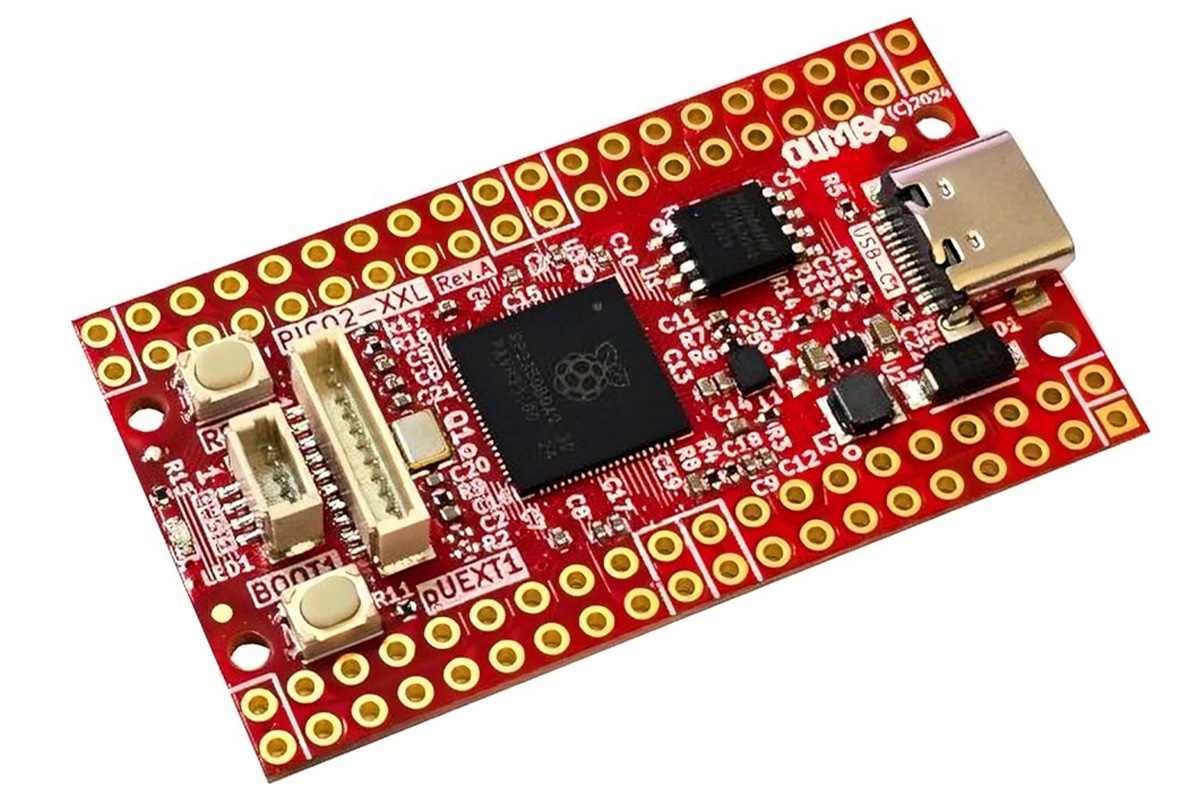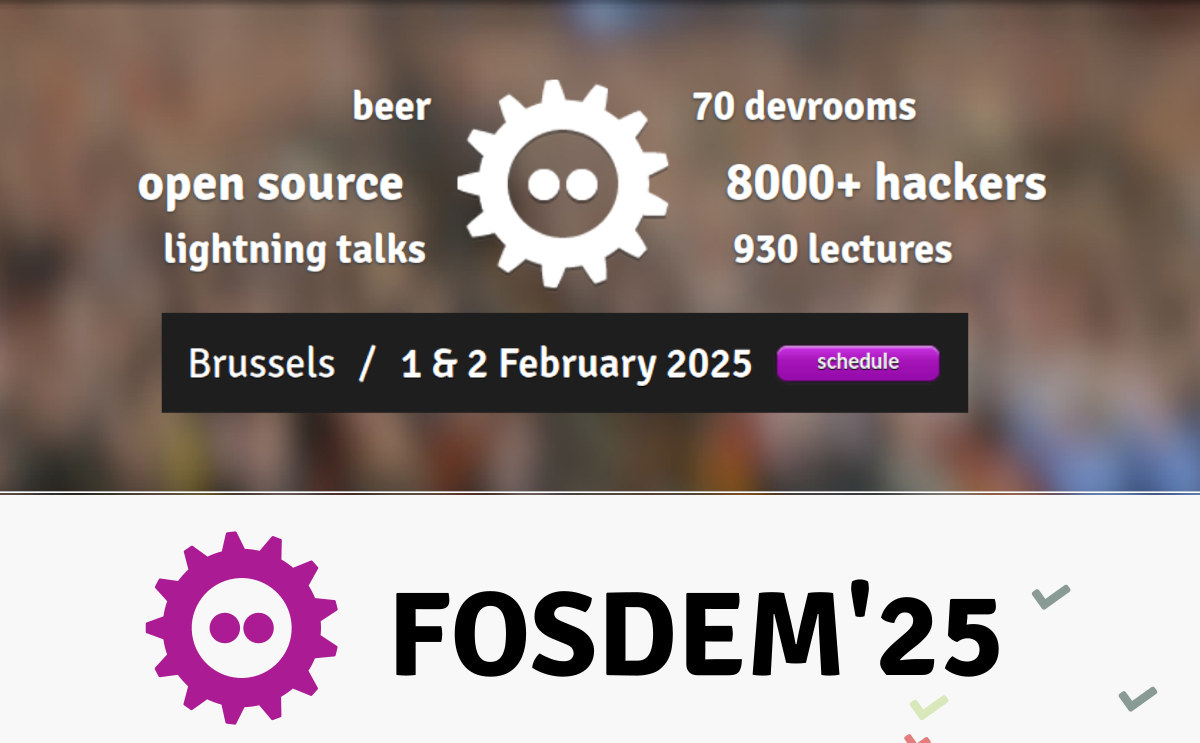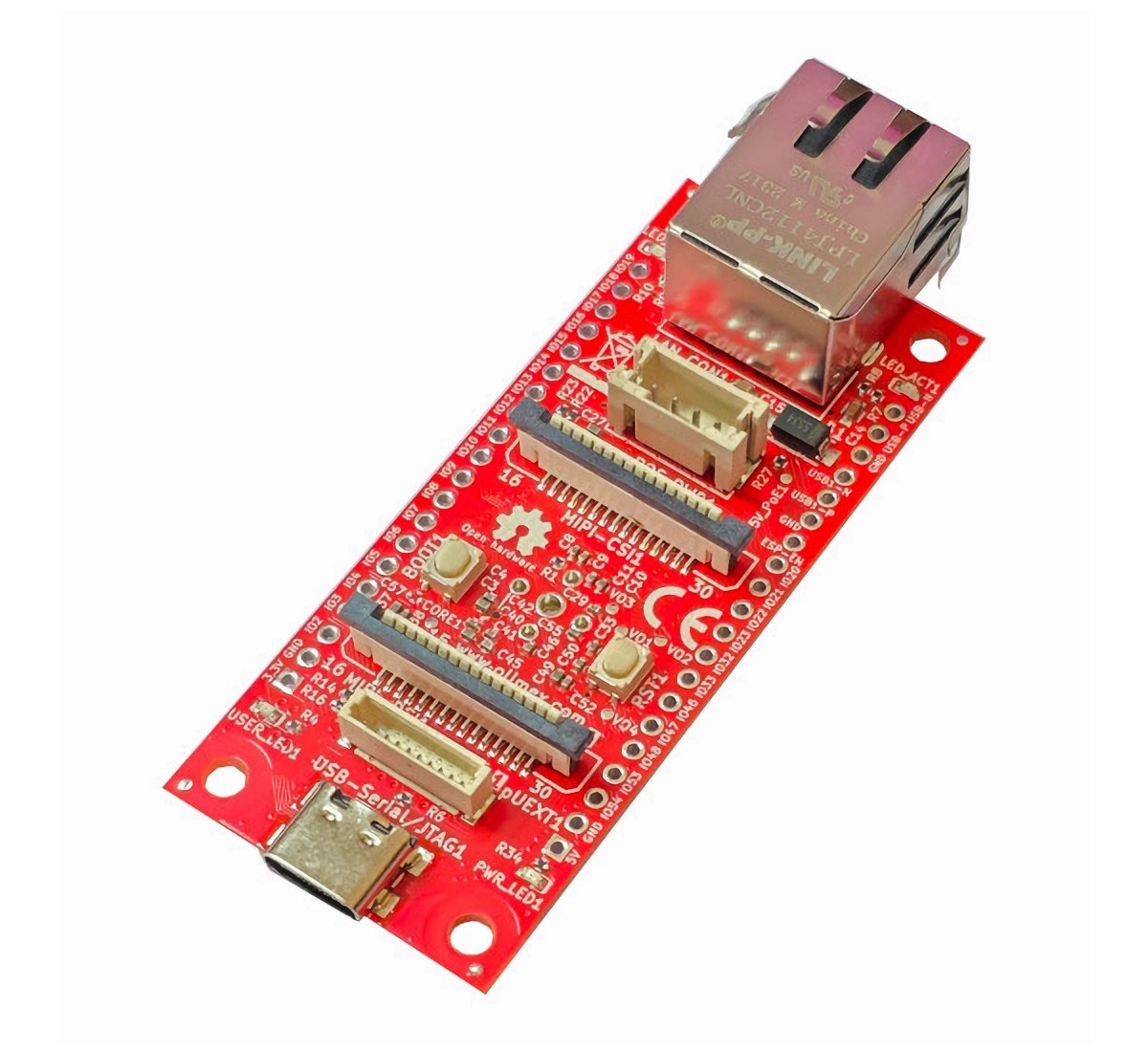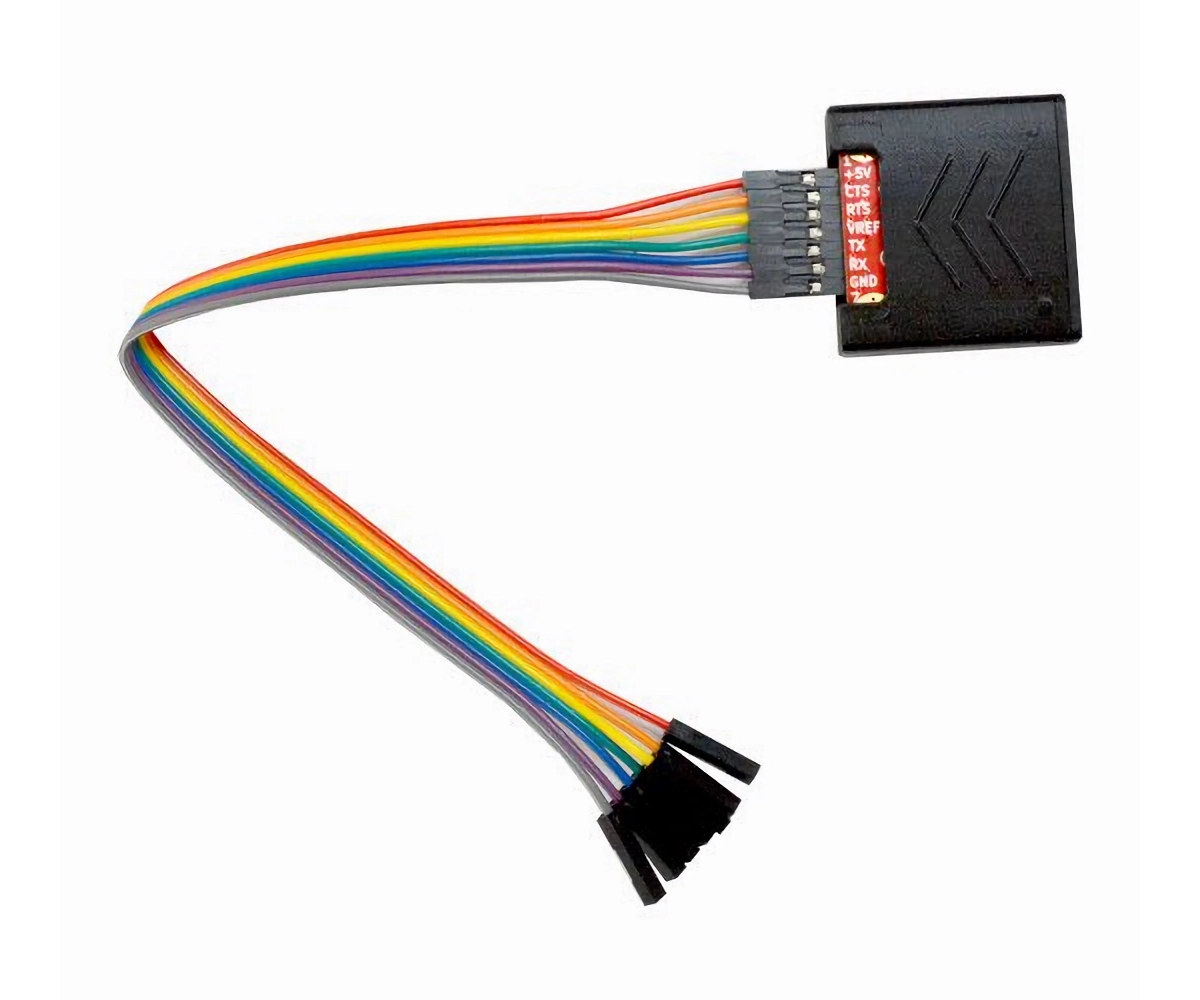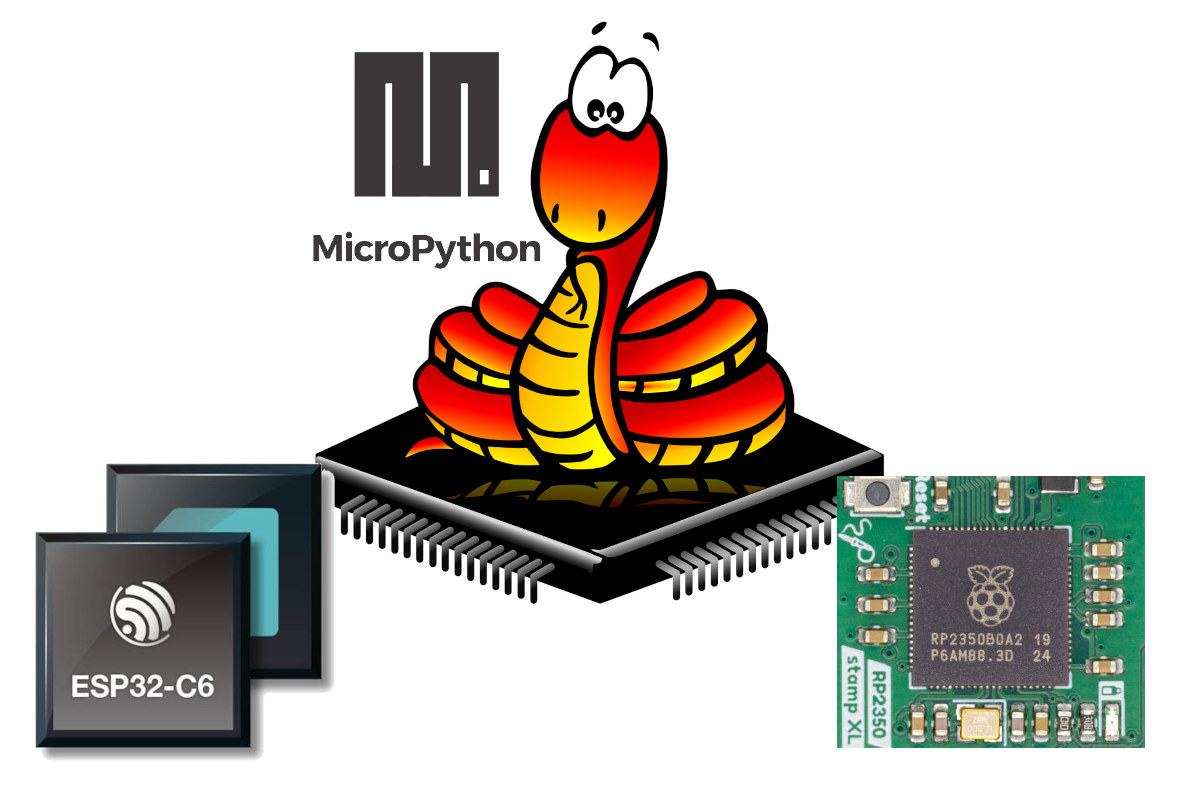Olimex has recently released the PICO2-XL and PICO2-XXL open-source hardware RP2350B development boards with up to 16MB flash, 8MB PSRAM, 48 GPIOs, a microSD card slot, and more. The main difference between the two boards is that the PICO2-XL includes 2MB of external QSPI Flash and a compact flat-bottom design, making it ideal for simpler, space-constrained projects. In contrast, the PICO2-XXL offers 16MB of QSPI Flash, 8MB of PSRAM, and a microSD card slot for expanded storage and performance, catering to more demanding applications like IoT and edge computing. Olimex PICO2-XL and PICO2-XXL specifications SoC – Raspberry Pi RP2350B MCU CPU Dual-core Arm Cortex-M33 @150MHz with Arm Trustzone Dual-core 32-bit Hazard3 RISC-V @ 150MHz Up to two cores can be used at the same time Memory – 520KB SRAM 8kB OTP storage Security – Secure boot Package – QFN-80; 10×10 mm Memory – 8MB PSRAM (PICO2-XXL only) Storage PICO2-XL – […]
FOSDEM 2025 schedule – Embedded, Open Hardware, RISC-V, Edge AI, and more
FOSDEM 2025 will take place on February 1-2 with over 8000 developers meeting in Brussels to discuss open-source software & hardware projects. The free-to-attend (and participate) “Free and Open Source Software Developers’ European Meeting” grows every year, and in 2025 there will be 968 speakers, 930 events, and 74 tracks. Like every year since FOSDEM 2015 which had (only) 551 events, I’ll create a virtual schedule with sessions most relevant to the topics covered on CNX Software from the “Embedded, Mobile and Automotive” and “Open Hardware and CAD/CAM” devrooms, but also other devrooms including “RISC-V”, “FOSS Mobile Devices”, “Low-level AI Engineering and Hacking”, among others. FOSDEM 2025 Day 1 – Saturday 1 10:30 – 11:10 – RISC-V Hardware – Where are we? by Emil Renner Berthing I’ll talk about the current landscape of available RISC-V hardware powerful enough to run Linux and hopefully give a better overview of what to […]
Olimex ESP32-P4-DevKit offers Ethernet, USB JTAG, MIPI DSI and CSI interfaces
Olimex ESP32-P4-DevKit is a compact development board powered by a 400 MHz ESP32-P4 general-purpose dual-core RISC-V microcontroller with a 10/100Mbps Ethernet RJ45 connector, a USB-C Serial/JTAG connector, MIPI DSI/CSI connectors for a display and a camera, GPIO headers and UEXT connector, Boot and Reset buttons, and a few LEDs. In some ways, it offers similar to the Waveshare ESP32-P4-NANO board we covered last month, but in a different form factor, and it lacks WiFi 6 connectivity and a USB Type-A connector. It’s also much more compact and cheaper than the official ESP32-P4-Function-EV-Board launched this summer, but again, with fewer features. Olimex ESP32-P4-Devkit: Microcontroller – ESP32-P4 MCU Dual-core RISC-V microcontroller @ 400 MHz with AI instructions extension and single-precision FPU Single-RISC-V LP (Low-power) MCU core @ up to 40 MHz GPU – 2D Pixel Processing Accelerator (PPA) VPU – H.264 and JPEG codecs support Memory – 768 KB HP L2MEM, 32 […]
15 Euros Olimex RP2040pc Raspberry Pi RP2040 computer board supports Apple and Oric Atmos emulation
Olimex RP2040pc is an inexpensive “all-in-one” computer board based on a Raspberry Pi RP2040 MCU with support for Apple //e, Apple ][+, and Oric Atmos emulation through the Reload emulator. The board features an HDMI port, stereo audio, four USB ports, and two UEXT expansion connectors. It’s not quite the first RP2040 retrocomputing board from Olimex, as they introduced the RP2040-PICO-PC in 2021 with an HDMI port, a 3.5mm audio jack, and a microSD card slot before launching the Olimex NEO6502, which combines a MOS6502 MCU for Apple II, Oric, and Commodore 64 emulators with an RP2040 for HDMI/DVI video output and a few other things. The RP2040pc is similar to the latter, but with more ports and features, and everything is handled by the Raspberry Pi RP2040 microcontroller. Olimex RP2040pc specifications: Microcontroller – Raspberry Pi RP2040 dual-core Cortex-M0+ MCU @ 133 MHz with 264 KB SRAM Storage – 16MB […]
Olimex USB-SERIAL-L is a USB-to-serial debug board with CTS/RTS pins, up to 3Mbps baud rate, adjustable voltage from 0.65V to 5.5V
There are already many USB-to-TLL debug boards on the market, but Olimex USB-SERIAL-L open-source hardware USB-to-serial board is more advanced than most with not only Tx/Rx pins, but also CTS/RTS pins, support for up to 3 Mbps speeds, and an adjustable voltage from 0.65V to 5.5V to cater to a wide range of boards. Olimex USB-SERIAL-L specifications: USB-to-serial chip – Silicon Labs CP2102N Seven signal lines – +5V, GND, CTS, RTS, TX, RX, Vref Baud rate from 50bps up to 3Mbps Output buffers with adjustable levels from 0.65 up to 5.5V USB – USB Type-C port for power and connect to host Misc – Power, Tx, and Rx status LEDs Power Supply Input – 5V via USB-C port Output – +5V to the target Dimensions – 35 x 35 x 8 mm (Custom 3D printed plastic box) Seven 200 mm long cables The Vref signal is used to adjust the […]
MicroPython v1.24 release adds support for RP2350 and ESP32-C6 microcontrollers, various RISC-V improvements
MicroPython has become one of the most popular ways of programming microcontrollers, and the just-released MicroPython v1.24 adds support for the widely-used Raspberry Pi RP2350 and Espresif ESP32-C6 microcontrollers and a range of other changes. Those include improved RISC-V support with native code generation, an updated Zephyr v3.7.0 RTOS with threading support, unified TinyUSB bindings across ports, a portable UART IRQ API, and enhanced mpremote recursive copy. Damien George goes into more detail about the RISC-V improvements: … include an RV32IMC native code emitter, native NLR and GC register scanning implementations for 32- and 64-bit RISC-V, support for placing RV32IMC native code in .mpy files and also freezing it, and RISC-V semihosting support. Testing for RISC-V is done with the qemu and unix ports, and the support is utilised in the esp32 and rp2 ports. The Raspberry Pi RP2350 comes with both Arm Cortex-M33 and RISC-V cores, and the good […]
Olimex RVPC is a one Euro RISC-V computer kit with VGA and PS/2 connectors
Olimex RVPC is one Euro RISC-V computer powered by a WCH CH32V003 RISC-V microcontroller and equipped with a VGA port for video output and a PS/2 connector to connect a keyboard. You won’t be able to do much with this device as an end-user, but it does not matter since the RVPC open-source hardware board mostly targets the education market and is offered as a kit to be soldered to lower the selling price and to serve as a soldering learning kit. Olimex RVPC specifications: MCU – WCH CH32V003 32-bit RISC-V2A microcontroller up to 48 MHz with 2KB SRAM, 16KB flash (SOP8 package with 6x GPIOs) Video Output – VGA connector (3x GPIO used for Vsync, HSync, and RGB) Keyboard port – PS/2 connector (2x GPIO used) Programmer port – 2-pin header for CH32V003 programming through a board such as ESP32-S2-DevKit-LiPo-USB Misc – Buzzer (1x GPIO) and Red power LED […]
Olimex NEO6502 is a W65C02 and Raspberry Pi RP2040-powered retro computer with HDMI, USB, and more
Olimex has recently launched NEO6502 an open-source hardware retro computer designed for educational and entertainment purposes, but that doesn’t mean it can’t be used for retro gaming. The board is very unique as it’s built around a 65C02 MPU and Raspberry Pi Pico RP2040 MCU in a dual-processor configuration. The MOS6502 handles the Apple II, Oric, and Commodore 64 emulators whereas the RP2040 handles everything else including HDMI (DVI) video output using the PicoDVI project. Previously we have written about similar retro computer kits such as the CERBERUS 2100, TinyLlama x86, DevTerm with ClockworkPi v3.14, Olimex AgonLight2, and many others feel free to check those out if you are interested in retro tech with a modern twist. Olimex NEO6502 board specifications Processors Western Design Center W65C02S 8-bit microprocessor @ 6.25 MHz with 64kB RAM, 32kB Graphics RAM Raspberry Pi RP2040 dual-core Cortex-M0+ MCU @ 133 MHz with 264 KB SRAM Storage […]


